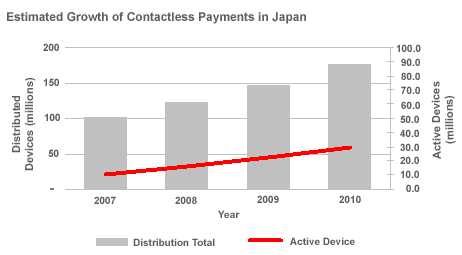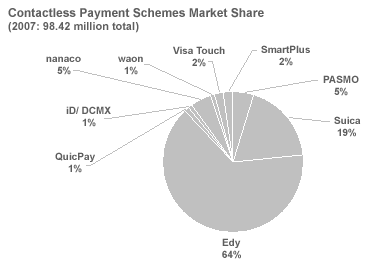Electronic Money: Contactless Payment in Japan
Abstract
Contactless payments in Japan are steadily increasing, with over 98.4 million payment devices currently in distribution. Although usage remains limited when compared with the overall size of the cash payment market, Celent expects device growth to reach nearly 180 million in 2010.
Japan is undergoing a transformation in its employment of alternative payment methods. In 2000, electronic money (also referred to as contactless payments) emerged. When it first appeared, there was little impact on both the market and regulators. Despite low expectations for this niche channel, electronic payments have increased dramatically. The impact of contactless payments on small cash transactions, particularly in large cities, is growing. However, overall usage remains small, despite major efforts to expand their presence.
In a new report, , Celent explores the complicated Japanese electronic money market. There are currently over 98.4 million devices in the country, including both smart card and mobile phone products. Usage is expected to grow steadily during the next five years. Contactless payments consist of three different payment methods: prepaid (stored value), auto-charge, and post-pay. The latter two are linked with credit cards, which has helped them enter the small payments market. Key success factors include an increase in the number of merchants that accept contactless payments and promotion by both issuers and distributors.

"While credit cards are both convenient and heavily distributed, consumers perceive that this channel should not be used for smaller payments. This is a common misunderstanding in the Japanese market," says Yumiko Manchu, an analyst at Celent. "In contrast, usage of debit cards is limited to less than 10% of credit card transactions and continues to decline. There remains a vast segment of the consumer population that prefers cash payments. This is the segment that electronic money has targeted in order to achieve wider acceptance."

Major electronic money vendors covered in this report include PASMO, Suica, Edy, Quicpay, iD, waon, and nanaco. Profiles provide a description of vendors' issued numbers, the number of usable places, and the types of devices and payment methods they provide. The report also evaluates the market structure for contactless payments.
The 35-page report contains 14 figures and three tables. A table of contents is available online.
Members of Celent's Retail Banking and Wholesale Banking research services can download the report electronically by clicking on the icon to the left. Non-members should contact info@celent.com for more information.

